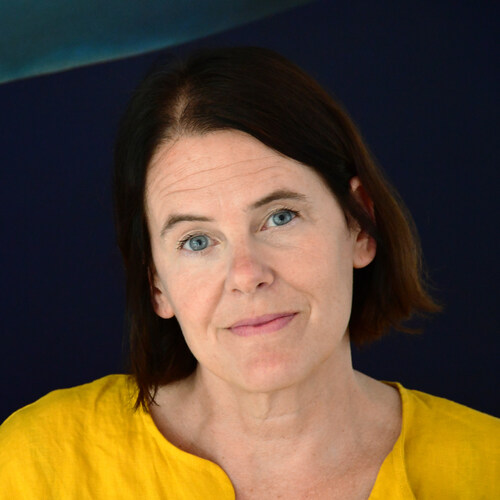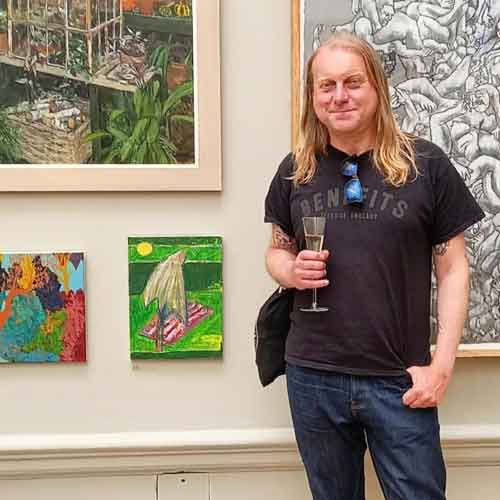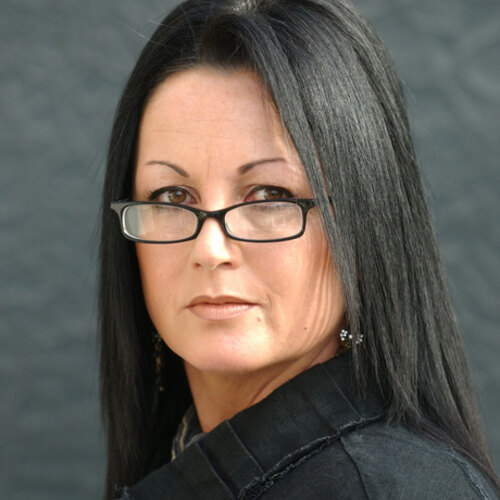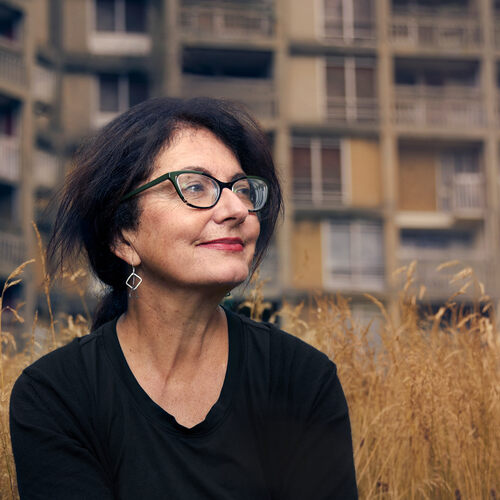On Selecting
Gordon Dalton gives a few thoughts on selecting the long list for the 2023 Contemporary British Painting Prize
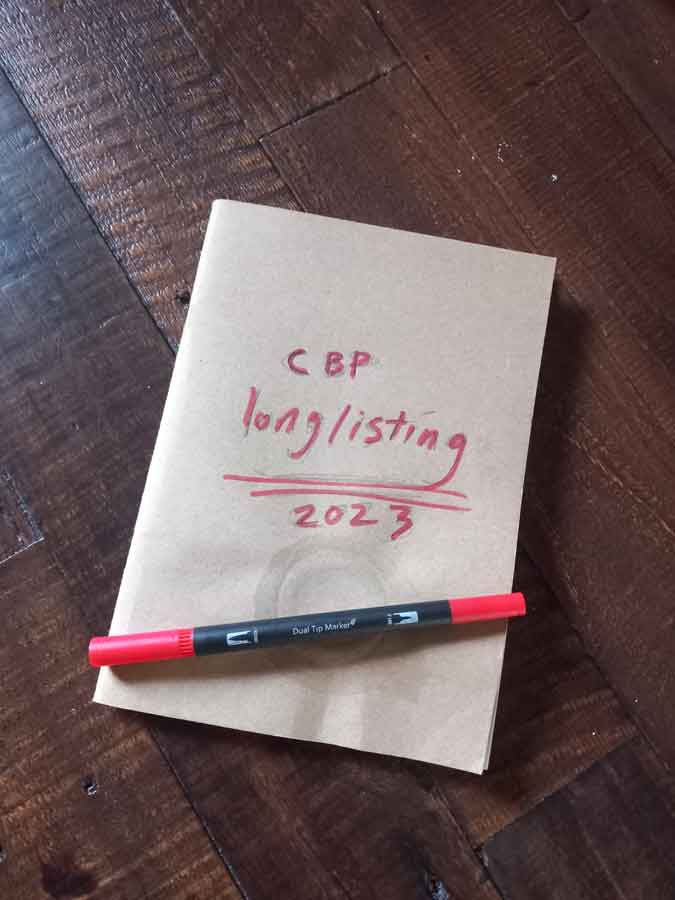
I’m writing this having just pressed a big red button marked ‘Finish Judging’ on the CuratorSpace online platform where over 1100 artists submitted their work for the 2023 Contemporary British Painting Prize. Actually the button was more of a turquoise colour, but that doesn’t stop me feeling like some sort of evil Bond villain, stroking a cat and laughing maniacally.
I’m not laughing though, but I do feel like a villain.
I, along with 3 other painters, Mandy Payne, Susan Gunn, and last year’s prize winner Lesley Bunch, were handed what we now know to be the gargantuan task of selecting this year’s prize. We had all said publicly what an honour and responsibility it was to be choosing 15 artists each to make up the Longlist, before meeting up to select what would be the exhibition which is generally 12-15 artists each year.
We had been forewarned by CBP Prize coordinator, Paula MacArthur, and given some tips on how to approach it, including from former selectors, but that didn’t stop the wave of anticipation swelling into being quite overwhelmed when you first clicked into the submissions. I made the mistake of having a quick look just after the deadline but did manage an appreciative nod to those who managed to apply at two minutes to midnight.
Each artist must submit 5 images so that was at least 5000 paintings to go through. Painters already have a Rolodex head full of images from art history, everyday life and of course their own work, so adding in another 5000 overnight, then making a critical judgement based on a myriad of micro decisions was always going to be difficult.
As a selector, I wanted to write a little about how I approached it in the name of transparency. Whilst we all had our own individual methods, the selectors felt it important and maybe useful to explain how we came to our decisions (without giving anything away of course).
There’s information elsewhere on practical tips on applying to open submissions but the best tip I was ever given by a selector of another prize was consistency. Those four or five images must be consistent, be it in style, lighting, photography and, this is harder to determine, quality. I had applied to this other prize one year, with four works. Two of them were related, but the other two were from another series of work. I was told later that although they liked both sets of work, the differences had put a slight doubt in their mind, and that doubt puts you in the ‘maybe’ pile.
Let me tell you now, that is not a pile you want to be in. Whilst it’s not the ‘No’ pile, it is almost impossible to get out of that ever increasing pile of maybes.
‘I tried not to be influenced by whether the submission was figurative or abstract but focussed more on the quality of the work, its prize worthiness, the application of paint (such as can be gleaned from a screen), its coherency, consistency, and the commitment of the artist to their approach. I was also looking for work that was distinctly individual.’
Mandy Payne
Overall, 99% of the submissions had that consistency. I was surprised at the general quality of the submissions. There was a lot of good painting to sift through. The photography of work was good, and perhaps most surprising, most supporting statements were in a plain language unaffected by art-speak.
So, down to the brass tacks. I had to start somewhere. I’d put aside three mornings to get through the first 1100 into a more manageable 100-ish. It took a lot longer than this, partly because the calibre was so high. That is a brutal cut of numbers, down to just over 10%.
I must have gone through the full list at least 10 times before selecting anyone, looking at each submission. I had a makeshift system of putting a tick next to names every time I went through. This went on as my list went down from 100 to 50, from 50 to 25 then back up to 50. I was trying to keep an eye on a broad range of genres, without directly pitching artists vs artist in some kind of painterly cage fight. I think perhaps it would be useful in the future for the initial longlist to be anonymous and based upon the images submitted.
There’s a comment that sometimes crops up in these kinds of open submissions where you’ll hear ‘oh, you can tell that selector chose that artist’. Well, that is kind of true to a certain extent. Personal taste and your own work and interests will always play a part. That’s why I’m there as a selector. However, as a painter, I’m interested in a broad range of painting, and wanted to reflect one of the prize’s aims to explore and promote current painting.
There’s also that other big elephant in the room of so-called nepotism. Selectors’ friends will apply so they get an easy ride apparently. Social media puts a million friends and a million paintings at our fingertips.
Well, of course I knew some of the people. They’re all painters. Part of my job as a painter is to be aware of other painters. If anything, I had to fight harder to not judge because I did know a small amount of the artists or knew them from social media. I found myself avoiding liking anything on Instagram in case it was deemed as a nod and a wink to being included.
‘Throughout the process I was mindful that my selection should be fair, I recognised a lot of the artists from Instagram and was careful to give time to artists not using such platforms. A few I couldn’t find much about as they didn’t have a website either.’
Mandy Payne
What was refreshing was how many people I didn’t know in some way, perhaps over 80% of all applications. There is so much excellent work being made across the UK. There were lots of applications from the (turgid turn of phrase) ‘regions’ (just means not London), lots from Wales and disappointingly few from Northern Ireland and Scotland. There seems to be a proportionately high, perhaps dangerously so, number of artists based in Sussex. Someone should inform the authorities.
By the end of the first week, I had sore eyes and a notebook full of scrawled names, some crossed out and then rewritten multiple times. I’d tried to go to my own studio, but it was impossible to make work in this head state. Getting the list from 20 to 15 was just me frantically teeth gnashing and arm flailing like an angry octopus. I felt guilty about each decision, couldn’t compare this person with that person.
Like most of the selectors, I’ve been on both sides of this fence. I’ve selected and judged open submissions but equally have submitted and been rejected
more than I have been selected. It’s a very low success rate. I know how it feels and what it means to be selected, and how much that rejection stings and can send you spiralling off into (even more) self-doubt. Being selected for the CBP Prize in 2016 was huge for me personally. Not being selected for the John Moores Prize still rankles. Don’t let it define you either way (he says grinding his teeth). It’s a bit of a cliché to say it’s a lottery, but it’s a 75/1 chance of being selected.
Luckily, I had a week away on a residency. I confidently wrote my final 15 down in red pen, put away the laptop and didn’t look at the list until I got back. I opened that notebook and my head flipped again. Five people swapped out. I started to hope that the other selectors would pick them up which sent me into a tactical voting blackhole of picking my two reserves just in case we had duplicates. I quickly got that out of my head and picked the 15 artists I wanted to see most, paintings that had blown me away alongside ones that had me curious.
‘I found it imperative to take a couple of days with a total break. The interesting thing was that some images were persistent, stuck in my mind, resurfacing in my thoughts.’
Lesley Bunch
‘The work of a painter is a solitary procedure. It is a privilege to have been allowed this insight into the work and compulsions of so many dedicated artists practicing over the breadth of the country.’
Susan Gunn
I’m not sure of the maths but my 15 could have been a hundred different versions from at least 250 people and still be representative of the excellent submissions throughout. One artist came up on the outside from not being in my top 100 to making it to my 15, there was just something nagging me about their painting. From that initiall run through, only one artist I’d ticked made it through every stage. Even as I pressed that big submit button and was emailing my confirmed list to CBP, my finger was hanging over the delete button, with possibly one final change.
For everyone who did enter, thank you. You’ve broadened my knowledge of what is out there. Each selector dedicated the time needed and gave each submission the respect it deserved. Whilst it was difficult, I massively enjoyed it. Seeing that amount of work was overwhelming but exhilarating. If you didn’t make the longlist or shortlist, don’t be too disheartened. On another day, with another set of selectors, you might have been selected. Keep going. Pick which open submissions to apply to carefully. My work will be there with yours, hopefully not in the maybe pile.
Gordon Dalton is a painter based in Saltburn by the Sea. He is a board member of CBP and represented by Aleph Contemporary.



